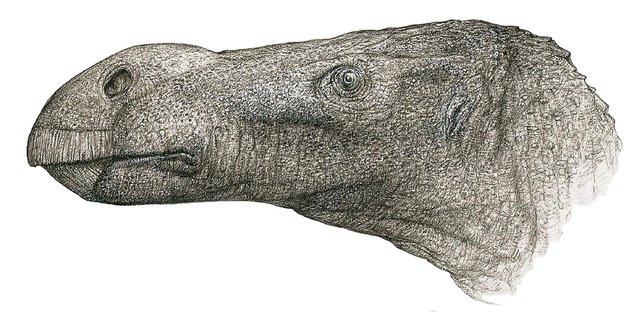A new dinosaur species has been identified decades after its bones were uncovered, as described in a new study. Scientists have named the prehistoric reptile Brighstoneus simmondsi, which is thought to have lived around 125 million years ago during the Lower Cretaceous period.
Brighstone, an English town near the excavation site, inspired the species Brighstoneous. The name Simmondsi is a tribute to amateur collector Keith Simmonds, who found the specimens.
"It's quite common, if not more common, these days to discover new dinosaurs in museum basements rather than out in the field," study author Jeremy Lockwood, a doctoral student at London's Natural History Museum and University of Portsmouth in the United Kingdom, said.
Simmonds discovered the bones in 1978 on the Isle of Wight, an English island off the south coast. The specimens were kept in the Dinosaur Isle Museum in Sandown, Isle of Wight, until they were studied for a different study almost 40 years later.
Lockwood was studying the diversity of huge plant-eating iguanodontian dinosaurs at the time, including the Iguanodon and Mantellisaurus atherfieldensis, the most common dinosaur fossil specimens found on the island so far.
Lockwood realized he had a new dinosaur species on his hands after extensively inspecting the bones.
He began reconstructing the skull of a specimen that had been in storage since 1978 after four years of unpacking and studying boxes of bones. He discovered several distinguishing traits that set it unique.
"The number of teeth was a sign," Lockwood said. "Mantellisaurus has 23 or 24, but this has 28. It also had a bulbous nose, whereas the other species have very straight noses. Altogether, these and other small differences made it very obviously a new species."
According to Lockwood, the Iguanodon and Mantellisaurus both had a straight, flat nose, whereas the Brighstoneus had a rounder one. Brighstoneus also had more teeth adapted for chewing.
Because grass and flowering plants were scarce during the Lower Cretaceous, the dinosaur had to eat rough vegetation like pine needles and ferns, he said.
Scientists calculated the dinosaur was about 26 feet long and weighed around 2,200 pounds based on the thigh and femur bones .
The discovery of this new species suggests that there were far more iguanodontian dinosaurs in the U.K. during the Early Cretaceous than previously thought, and that a long-held declaration of assigning fossils discovered on the Isle of Wight to either the Iguanodon or Mantellisaurus species should be reevaluated.
The study is published in the Journal of Systematic Palaeontology.






